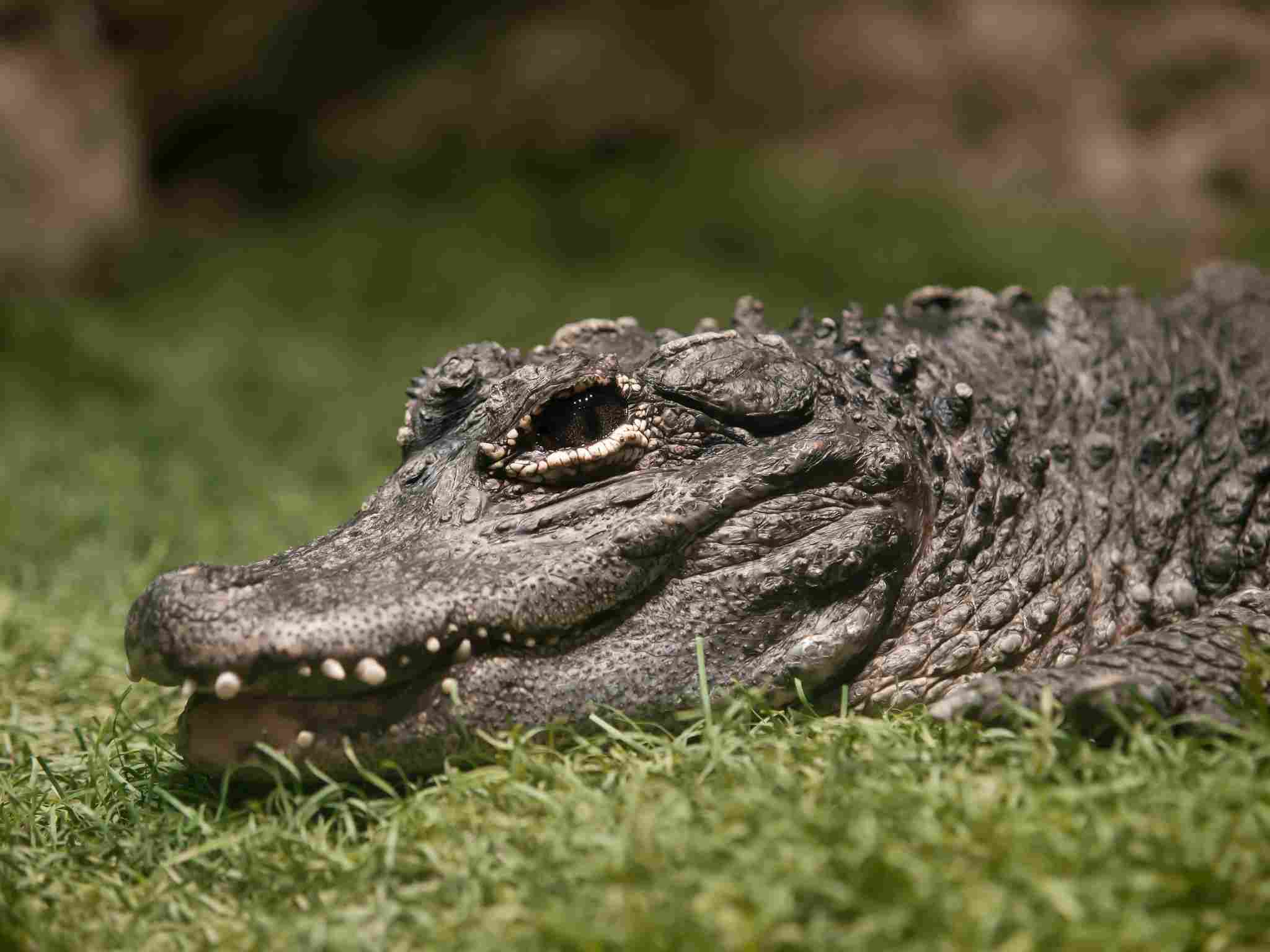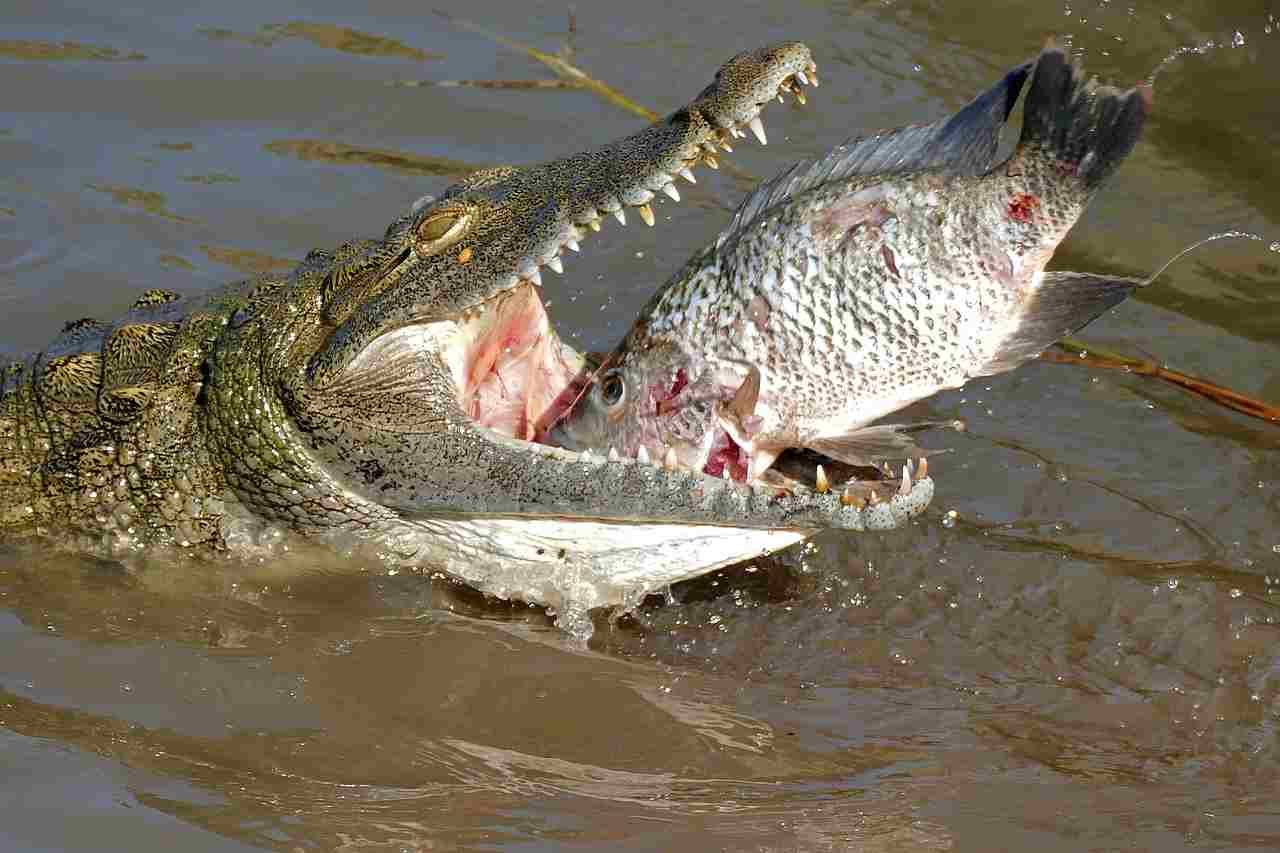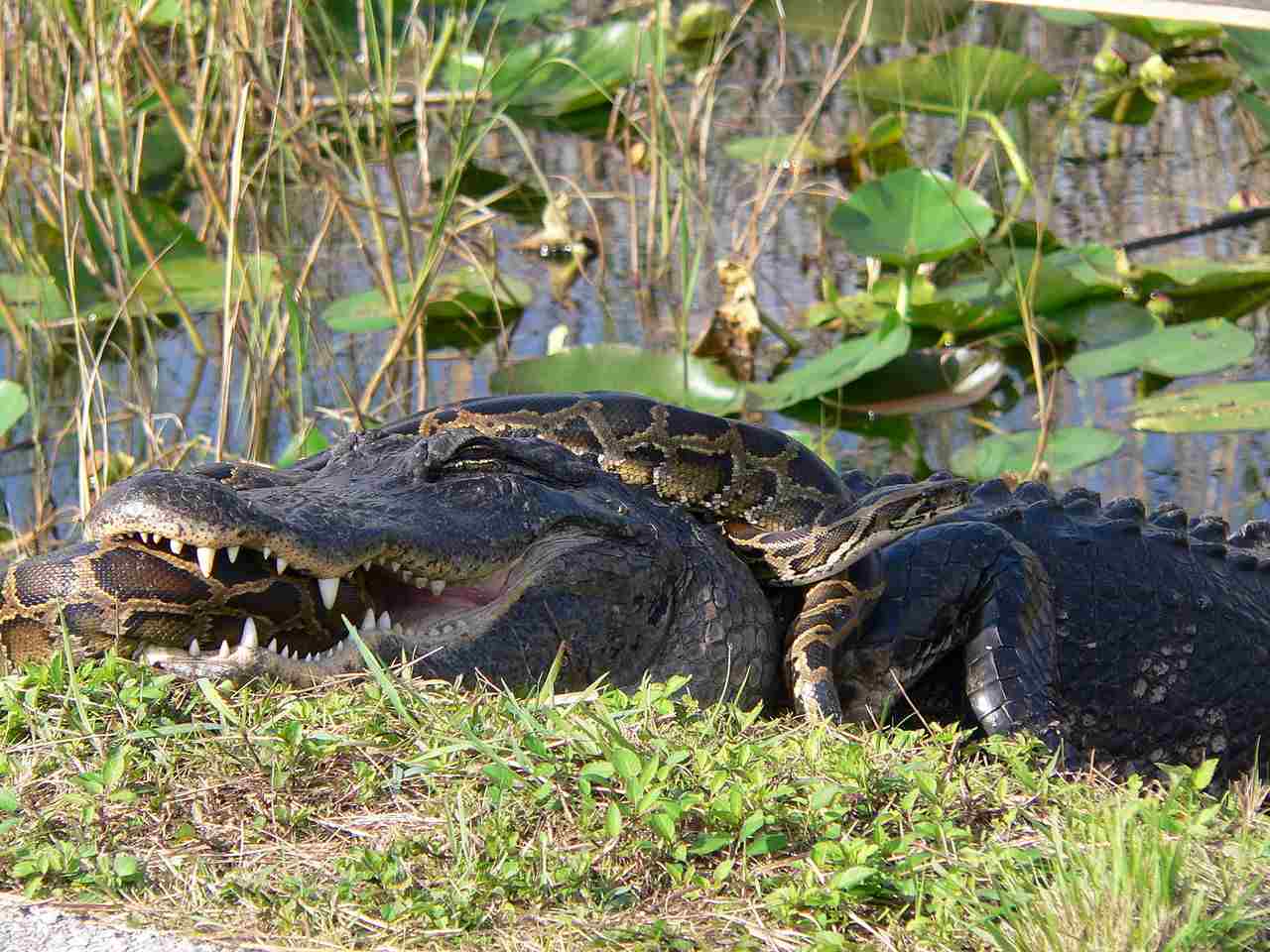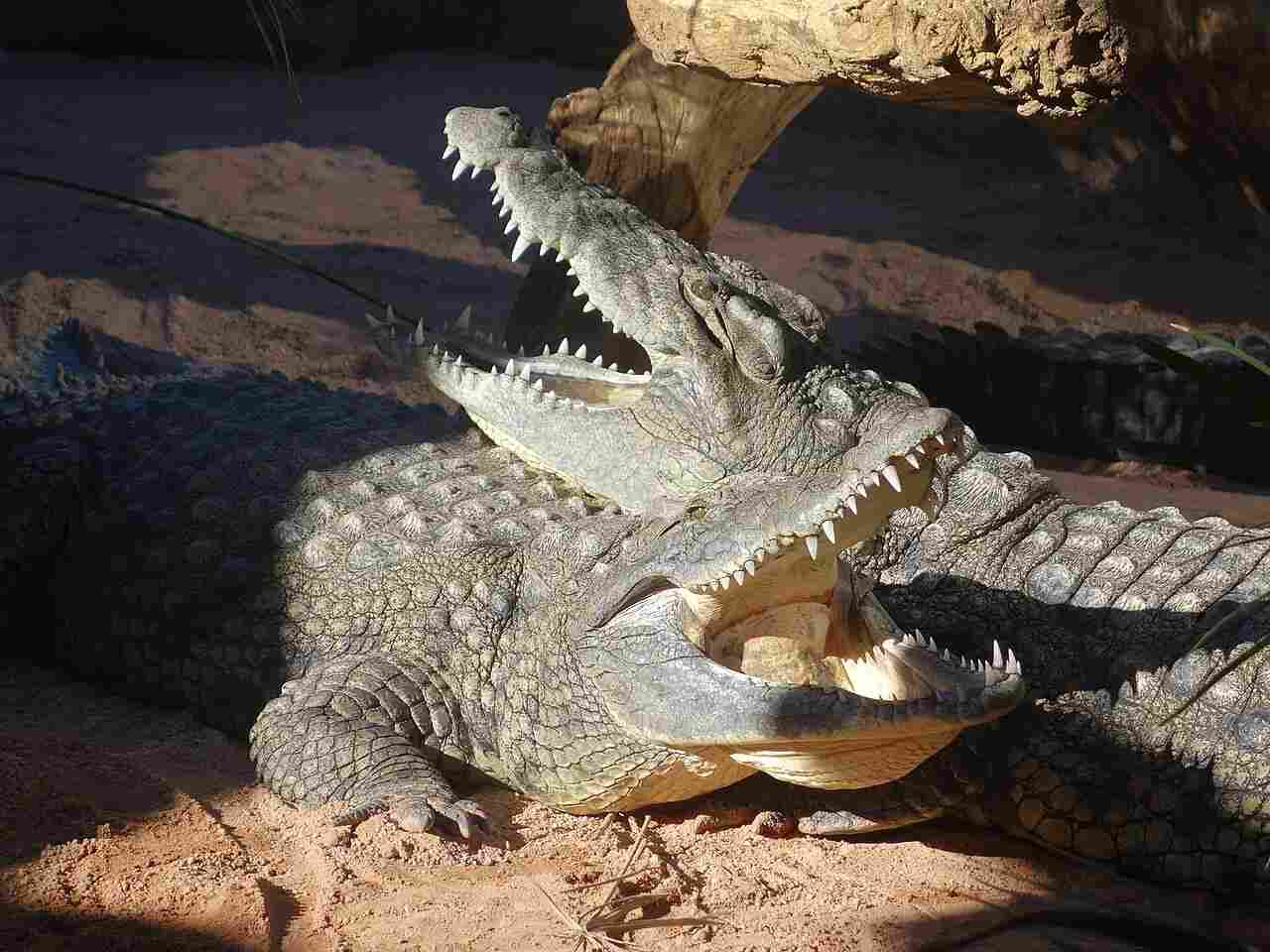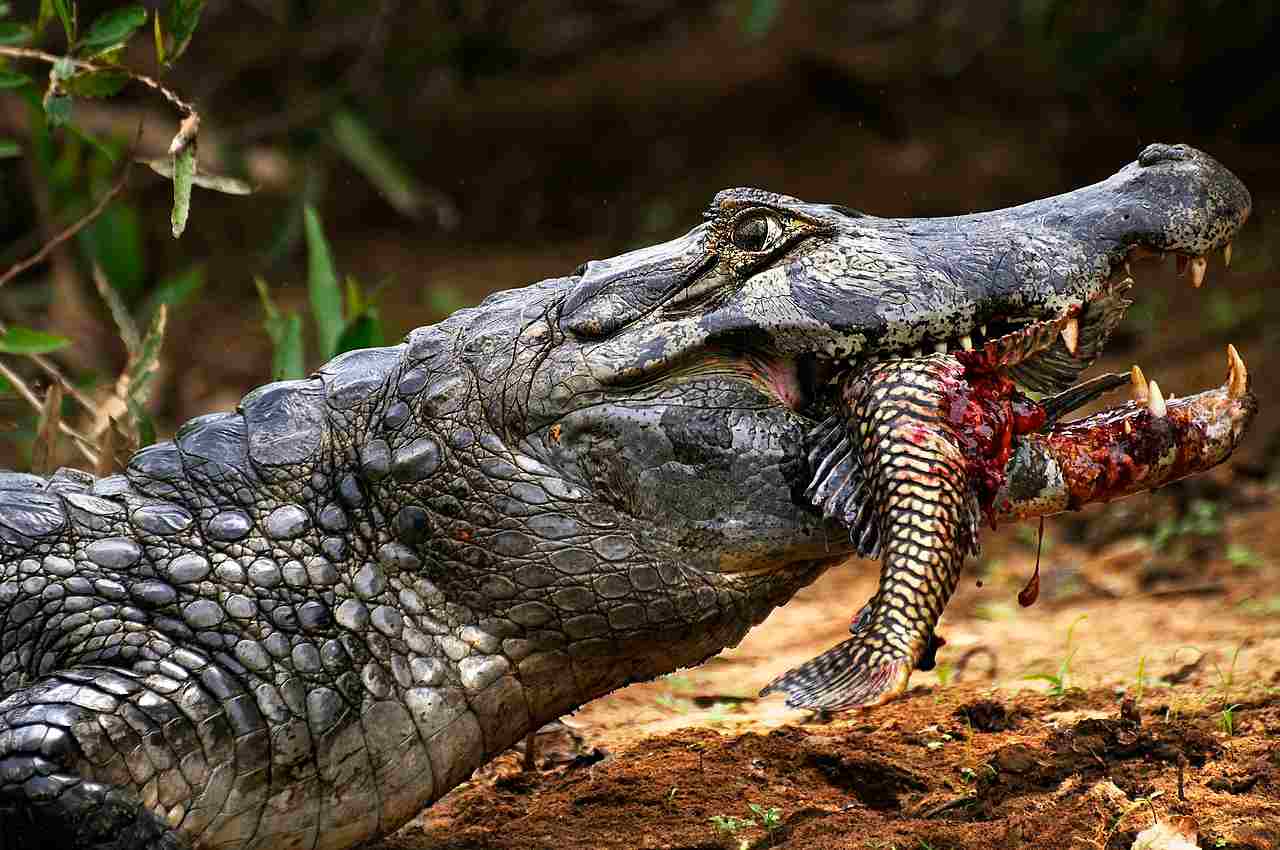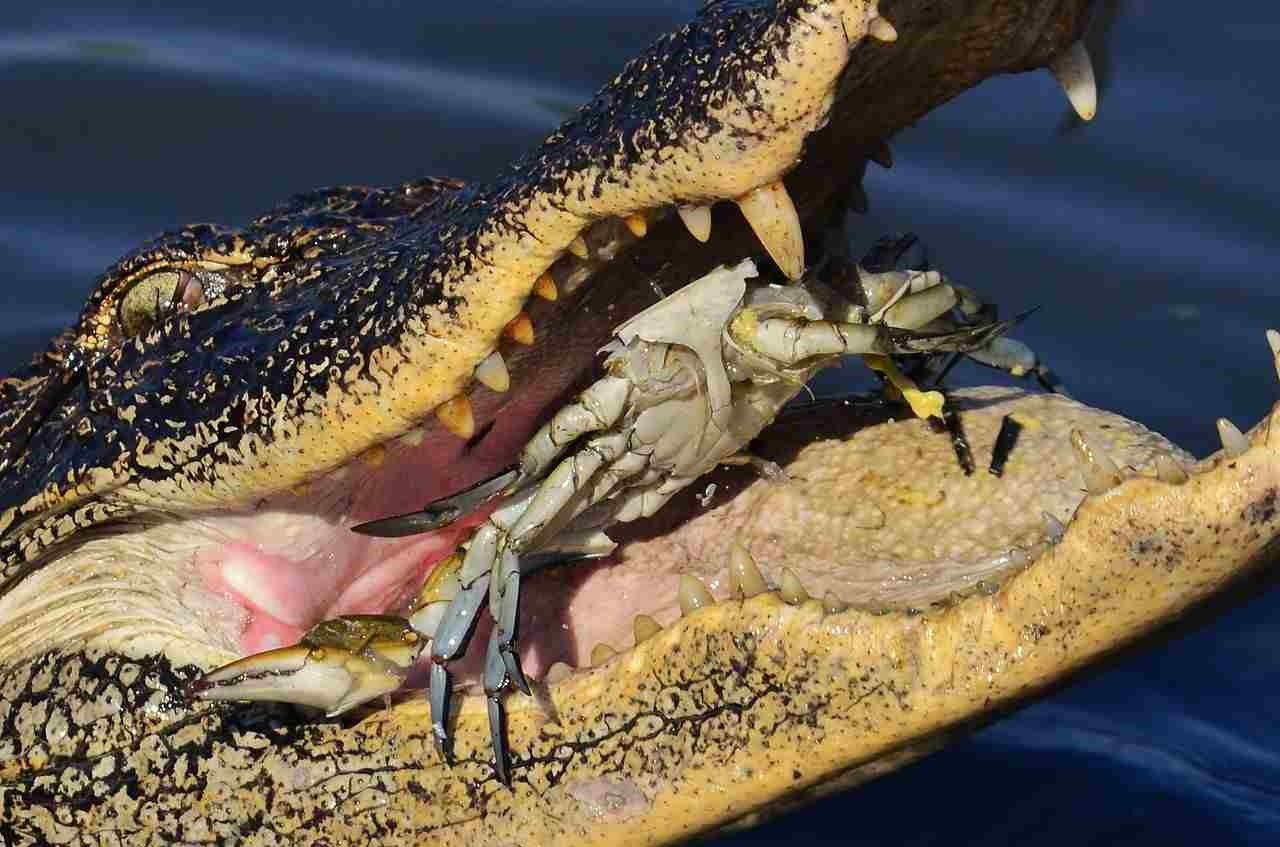Alligator Vs Alligator Snapping Turtle Size, Weight, Overall Comparison
In a theoretical confrontation between an alligator and an alligator snapping turtle, two reptiles with reptilian and predatory similarities, we explore the potential dynamics of this scenario. Both share common characteristics as formidable predators, but their differences in size and anatomy shape their predatory strategies. This analysis aims to highlight their shared reptilian traits while asserting that, in a fight, an alligator would easily overpower an alligator snapping turtle due to its significantly larger size, greater weight, increased strength, and large powerful jaws.
Alligator vs Alligator Snapping Turtle: Assessing the Likely Victor in a Confrontation
In a hypothetical scenario involving an alligator and an alligator snapping turtle, both reptiles with reptilian and predatory similarities, the outcome of a fight is influenced by their differences in size and anatomy. While both are formidable predators, the overwhelming advantages in size, weight, strength, and jaw structure favor the alligator in this hypothetical confrontation.
I). Reptilian and Predatory Similarities:
– Both the alligator and the alligator snapping turtle share reptilian traits and are considered formidable predators within their respective environments. Their predatory strategies are shaped by their anatomy and behaviors as reptilian hunters.
II). Size, Weight, and Strength Disparities:
– The alligator is significantly larger, heavier, and stronger than the alligator snapping turtle. These disparities in size and strength give the alligator a substantial advantage in terms of physical dominance and predatory prowess.
III). Large Powerful Jaws of the Alligator:
– The alligator possesses large and powerful jaws, equipped with a formidable bite force. This anatomical feature enhances its effectiveness as a predator and contributes to its ability to overpower prey.
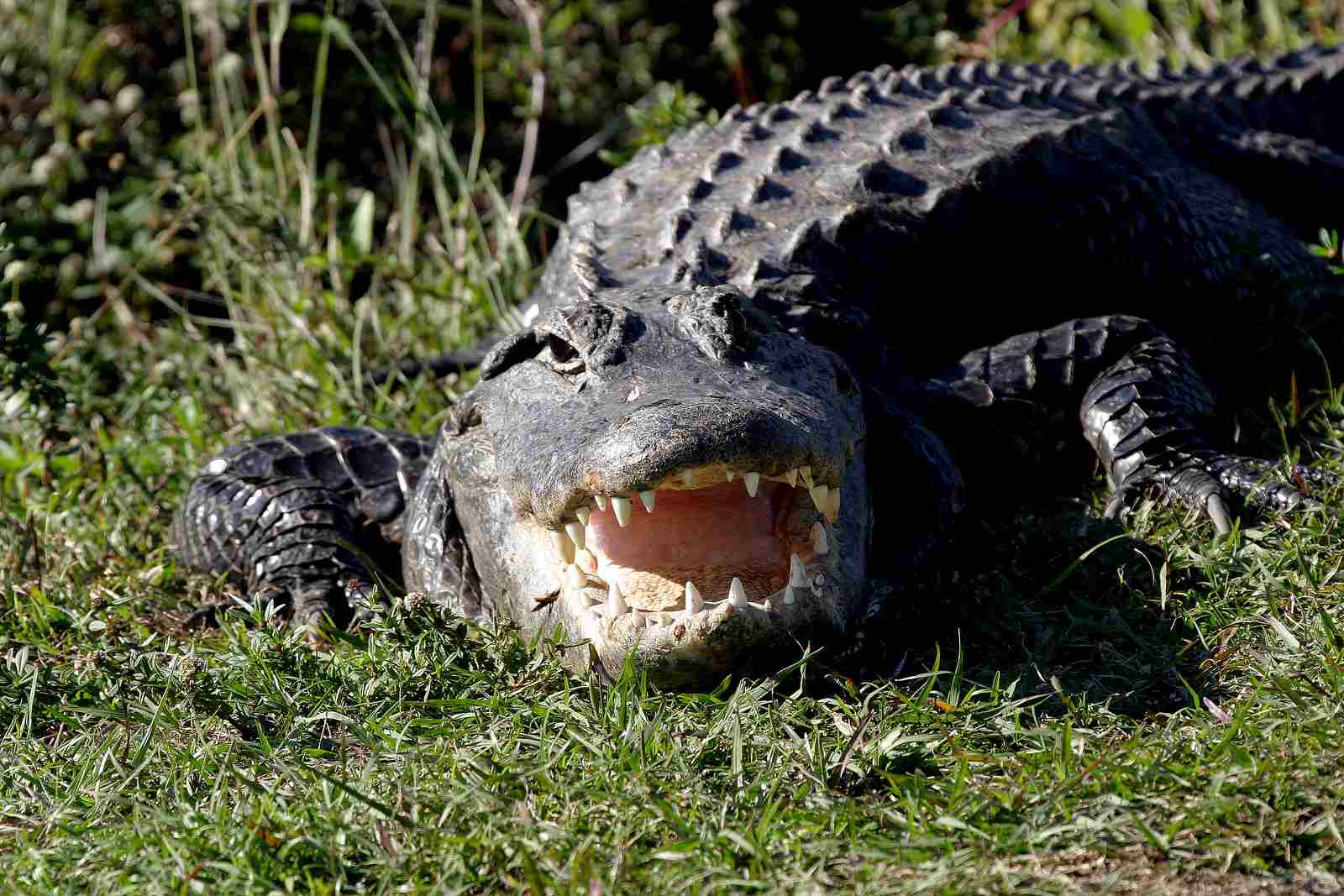
IV). Alligator Snapping Turtle’s Comparative Disadvantages:
– The alligator snapping turtle, while possessing its own set of adaptations for predation, is at a comparative disadvantage in a fight against an alligator. Its smaller size, lighter weight, and less powerful jaws make it susceptible to being overpowered by the larger alligator.
V). Overall Dynamics:
– In this hypothetical scenario, an alligator would easily overpower an alligator snapping turtle in a fight due to its significantly larger size, greater weight, increased strength, and large powerful jaws. While both are formidable predators, the overwhelming physical advantages of the alligator would likely determine the outcome in this hypothetical confrontation between these reptilian hunters.
*Details of Comparison
| Criteria | Alligator |
Alligator Snapping Turtle
|
| Appearance | Streamlined, dark coloration, prominent ridges |
Rugged, dark shell, massive head, lure for prey
|
| Size | 8-15 feet | Over 2.5 feet |
| Weight | 500-1,000 pounds | 155-175 pounds |
| Bite Force (PSI) | 2,125 PSI | ~1,000 PSI |
| Physical Offensive Advantages | Quick strikes, powerful bites, streamlined body |
Lure for prey, ambush tactics
|
| Physical Defensive Advantages | Tough hide, water submersion |
Hard shell, aggressive behavior
|
| Speed | Up to 20 mph | Slow-moving |
| Agility | Agile in water | Less agile |
| Overall Physical Capacity | Versatile for aquatic and terrestrial activities |
Specialized for ambush predation
|
| Habitat Preference(s) | Freshwater habitats; alligators also in brackish water |
Freshwater habitats; avoid highly populated areas
|
| Tracks | Claw marks, tail drag |
Claw marks, tail drag
|
| Lifespan | 30-50 years | 20-70 years |
| Mode of Feeding | Carnivorous ambush predators |
Carnivorous ambush predators
|
| Intelligence | Higher cognitive abilities |
Limited cognitive abilities
|
| Social Behavior | Complex social behaviors |
Generally solitary
|
| Mode of Reproduction | Oviparous; maternal care |
Oviparous; no parental care
|
| Parental Behavior | Significant maternal care |
Lack of parental care
|
| Proximity to Human-Inhabited Areas | Can inhabit areas close to humans |
Avoids highly populated areas
|
| Behavior Toward Humans | Generally avoids, may become aggressive if provoked |
Generally avoids, may display aggression if threatened
|
| Danger Posed to Humans | Can pose a danger, occasional attacks |
Generally not considered dangerous, caution advised
|
| Associated Precautions | Caution near water, avoid feeding |
Caution advised to avoid bites
|
| Conservation Status | Varied, often stable |
Faces conservation concerns, more vulnerable
|
Key Points
- Alligators are generally larger, faster, and more adaptable to human-inhabited areas.
- Alligator snapping turtles are specialized for ambush predation with a unique lure.
- Alligators exhibit significant maternal care, while alligator snapping turtles lack parental involvement.
- Alligators pose a higher risk to humans compared to alligator snapping turtles.
- Conservation statuses vary, with alligator snapping turtles being more vulnerable.
1. Taxonomy:
Alligator: Kingdom: Animalia, Phylum: Chordata, Class: Reptilia, Order: Crocodylia, Family: Alligatoridae, Genus: Alligator.
Alligator Snapping Turtle: Kingdom: Animalia, Phylum: Chordata, Class: Reptilia, Order: Testudines, Family: Chelydridae, Genus: Macrochelys.
2. Appearance:

Alligator: Streamlined body, broad snout, dark coloration, and prominent ridges on the back. Webbed feet for efficient swimming.
Alligator Snapping Turtle: Rough, dark shell, massive head with a beak-like jaw, and a lure to attract prey. Typically larger and more robust in appearance compared to alligators.
Comparison: Alligators have a smoother appearance with a sleek profile, while alligator snapping turtles have a more rugged and bulky appearance.
Ecological Implications: The distinct appearances cater to their ecological roles; alligators are adapted for swift aquatic movement, while alligator snapping turtles rely on their appearance to attract and catch prey underwater.
3. Size:
Alligator: Adult lengths range from 8 to 15 feet, with males being larger than females.
Alligator Snapping Turtle: Adults can reach lengths of over 2.5 feet, with males typically larger than females.
Comparison: Alligators are generally larger in size compared to alligator snapping turtles.
Ecological Implications: Size plays a role in their ecological niche; larger alligators may have different prey preferences and contribute differently to ecosystem dynamics than the more moderately sized alligator snapping turtles.
4. Weight:
Alligator: Adult weights range from 500 to 1,000 pounds, with males being heavier.
Alligator Snapping Turtle: Adults can weigh between 155 and 175 pounds, with males being heavier on average.
Comparison: Alligators are substantially heavier compared to alligator snapping turtles.
Ecological Implications: Weight affects their interactions within ecosystems; the heavier alligators may impact their environment differently than the more moderately weighted alligator snapping turtles.
5. Bite Force (PSI – Pounds per Square Inch):

Alligator: Estimated to have a bite force of around 2,125 PSI.
Alligator Snapping Turtle: Can exert a powerful bite, with an estimated force of around 1,000 PSI.
Comparison: Alligators generally have a higher bite force than alligator snapping turtles.
Ecological Implications: Bite force influences their hunting strategies and prey selection, potentially affecting the population dynamics of their prey species in different ways.
6. Physical Offensive Advantages:
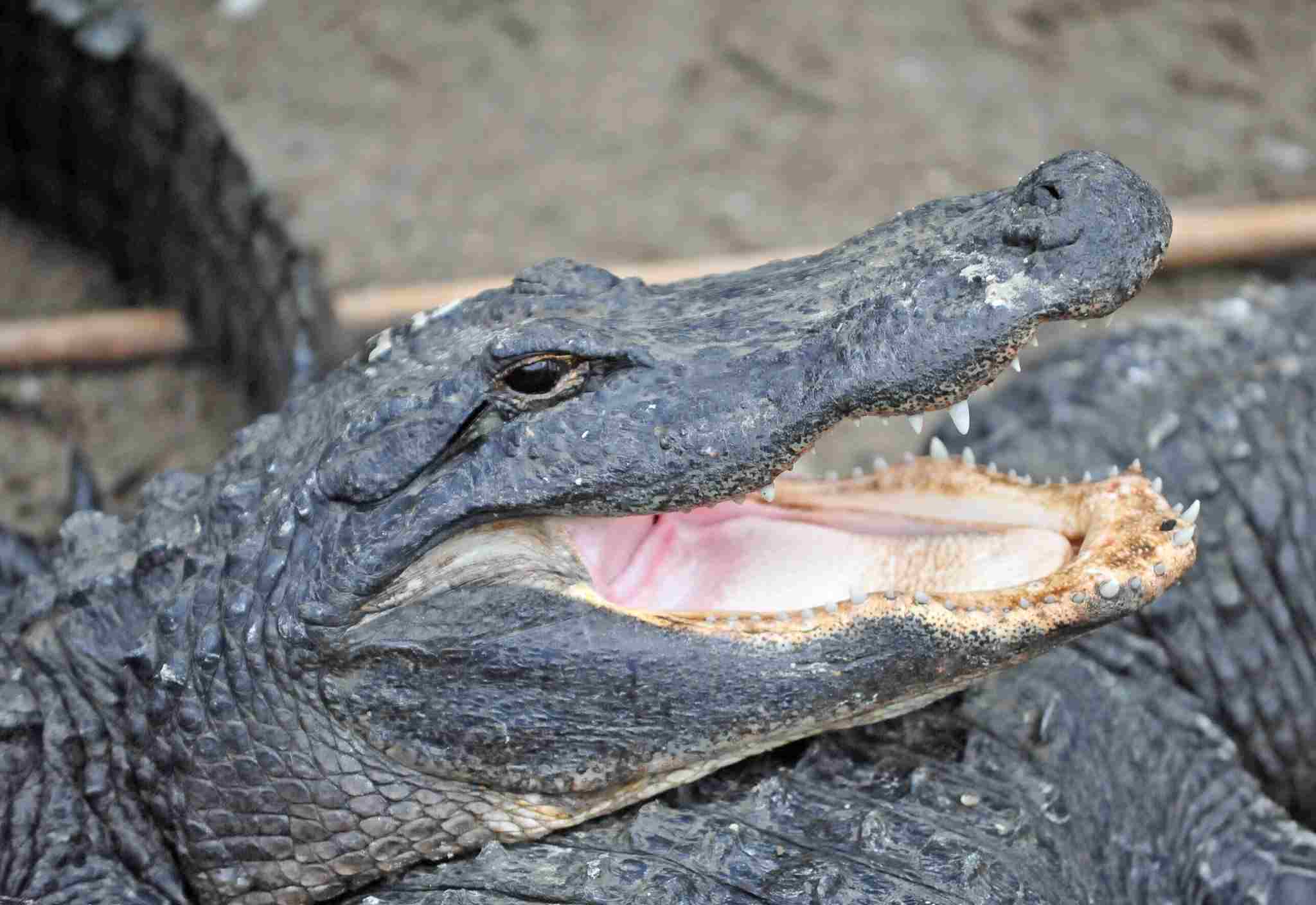
Alligator: Powerful jaws and a high bite force for effective prey capture. Quick striking capability due to streamlined body and strong tail.
Alligator Snapping Turtle: Powerful jaws with a sharp beak, enhanced by a lure to attract prey. Capable of ambushing fish with precision.
Comparison: Alligators rely on quick strikes and powerful bites, while alligator snapping turtles use a more sedentary approach, relying on the lure to attract prey.
Ecological Implications: These offensive strategies contribute to their roles within ecosystems; alligators may be more adept at capturing agile prey, while alligator snapping turtles are specialized for ambushing slower-moving targets.
7. Physical Defensive Advantages:
Alligator: Tough, scaly hide providing protection against predators. Can submerge quickly in water to avoid threats.
Alligator Snapping Turtle: Hard shell for protection. Sharp beak and aggressive behavior serve as deterrents against potential threats.
Comparison: Both species employ physical defenses, but the mechanisms differ – alligators rely on their tough hides, while alligator snapping turtles use their shells and aggressive behavior.
Ecological Implications: These defensive mechanisms influence their interactions with predators and help define their roles in maintaining ecosystem balance.
8. Speed (Km/hour or Mile/hour):
Alligator: Capable of short bursts of speed, reaching up to 20 miles per hour in water.
Alligator Snapping Turtle: Relatively slow-moving on land and in water, with limited mobility.
Comparison: Alligators are significantly faster than alligator snapping turtles.
Ecological Implications: Speed affects their hunting and escape strategies, influencing their roles within ecosystems. Alligators may be more effective predators in dynamic environments.
9. Agility:
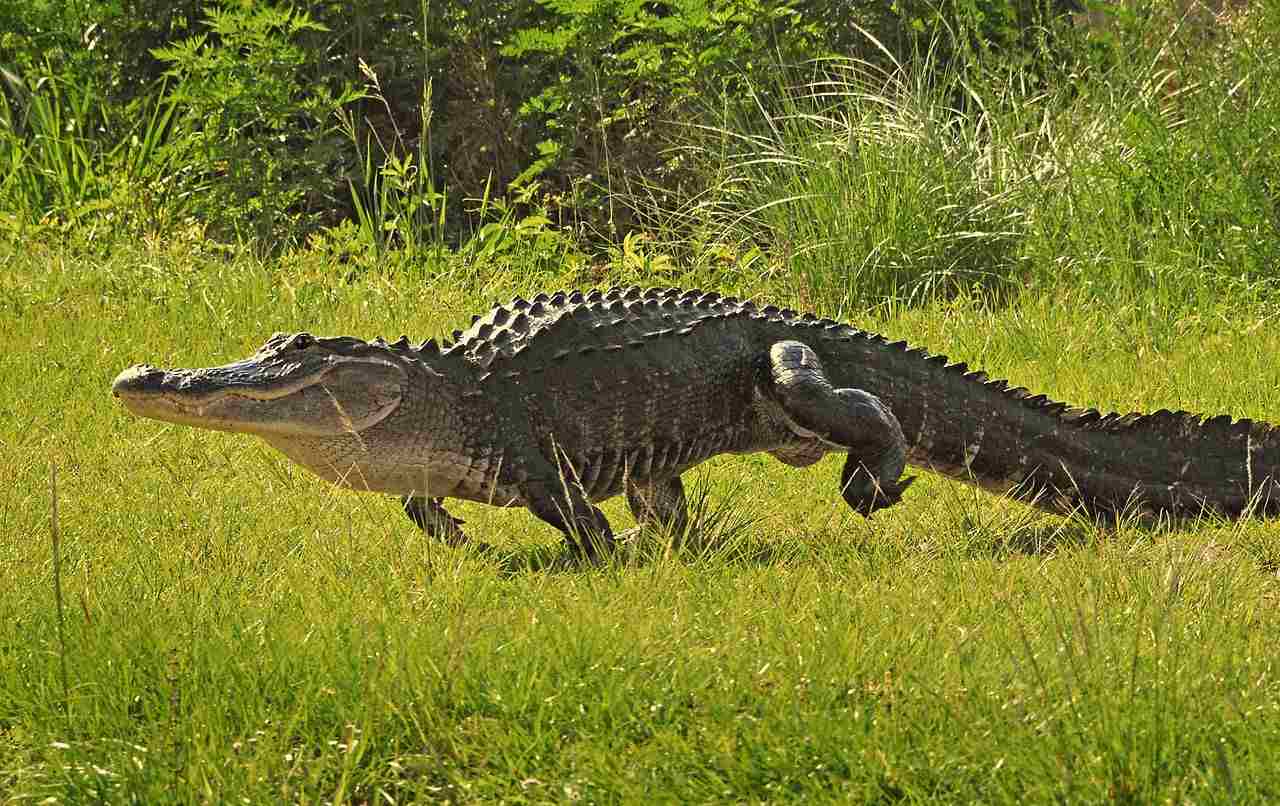
Alligator: Agile in water, with a streamlined body allowing for quick turns and maneuvers.
Alligator Snapping Turtle: Less agile due to their bulkier build and reliance on ambush tactics.
Comparison: Alligators exhibit greater agility compared to alligator snapping turtles.
Ecological Implications: Agility contributes to their ability to navigate and exploit their habitats effectively. Alligators’ agility in water enhances their hunting capabilities and resource utilization.
10. Overall Physical Capacity:
Alligator: Possesses a well-rounded physical capacity with a combination of speed, strength, and agility. Suited for both aquatic and terrestrial activities.
Alligator Snapping Turtle: Specialized for ambush predation, excelling in strength and bite force but lacking in speed and agility.
Comparison: Alligators have a more versatile physical capacity, while alligator snapping turtles are highly specialized for their unique hunting strategy.
Ecological Implications: Versatility in physical capacity allows alligators to adapt to various ecological niches, while the specialized capacity of alligator snapping turtles reflects their specific ecological role.
11. Habitat Preference(s):
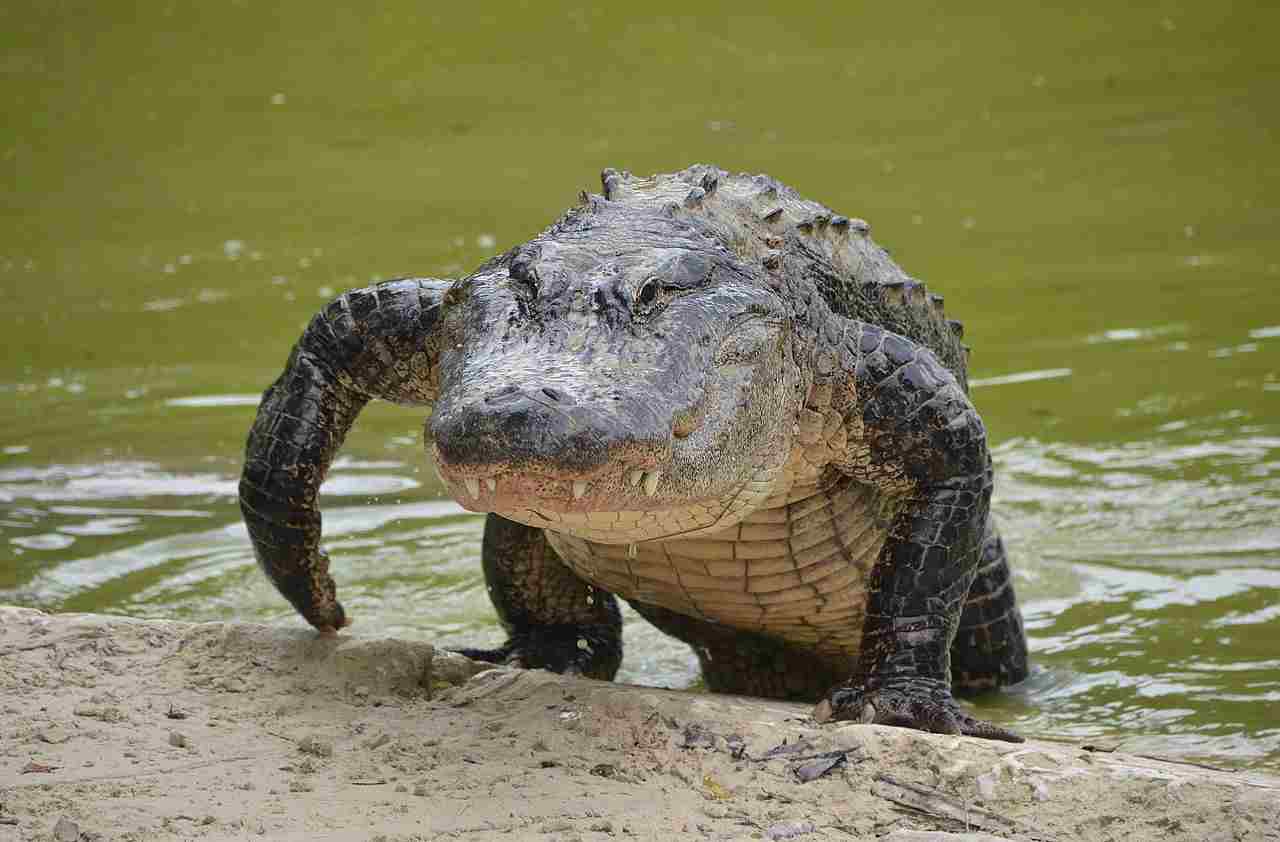
Alligator: Prefers freshwater habitats such as swamps, lakes, and rivers. Can also inhabit brackish water.
Alligator Snapping Turtle: Primarily found in freshwater habitats like slow-moving rivers, lakes, and swamps.
Comparison: Both species share a preference for freshwater habitats, but alligators have a broader range, including brackish environments.
Ecological Implications: Habitat preferences dictate their roles within ecosystems and influence their interactions with other species in their respective environments.
12. Tracks:
Alligator: Distinctive tracks with claw marks and a tail drag, indicative of their reptilian locomotion.
Alligator Snapping Turtle: Leave tracks with claw marks and a characteristic tail drag, similar to alligators but smaller in scale.
Comparison: Both species leave recognizable tracks, but the size and details differ.
Ecological Implications: Tracking provides insights into their presence and movements, aiding researchers and wildlife enthusiasts in monitoring their populations and behaviors.
13. Lifespan:
Alligator: Can live up to 30-50 years in the wild, with variations based on species and environmental factors.
Alligator Snapping Turtle: Long-lived, with lifespans of 20-70 years, influenced by factors like habitat and predation.
Comparison: Both species exhibit long lifespans, with the potential for alligator snapping turtles to reach even older ages.
Ecological Implications: Long lifespans contribute to their roles as long-term members of ecosystems, influencing population dynamics and ecosystem stability.
14. Mode of Feeding:
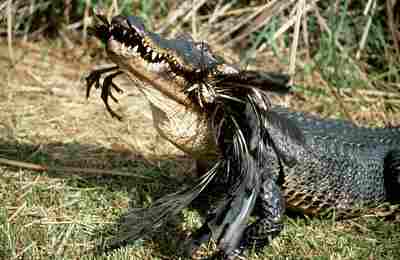
Alligator: Carnivorous diet consisting of fish, amphibians, reptiles, birds, and mammals. Engages in a sit-and-wait strategy, ambushing prey.
Alligator Snapping Turtle: Carnivorous, primarily preying on fish by using a unique lure to attract them. Employ an ambush technique while lying in wait.
Comparison: Both are carnivorous ambush predators, but the alligator snapping turtle uses a specialized lure for hunting.
Ecological Implications: Their feeding strategies contribute to the regulation of prey populations in their respective ecosystems, influencing community dynamics.
15. Intelligence:
Alligator: Exhibits basic problem-solving abilities, social learning, and efficient hunting strategies.
Alligator Snapping Turtle: Limited cognitive abilities compared to mammals but displays problem-solving related to hunting and survival.
Comparison: Alligators generally show higher cognitive abilities than alligator snapping turtles.
Ecological Implications: Intelligence influences their adaptability to environmental changes and the efficiency of their foraging strategies.
16. Social Behavior:
Alligator: Displays social behaviors, including courtship rituals, communication, and cooperative hunting. Young alligators may form social groups.
Alligator Snapping Turtle: Generally solitary, with interactions limited to mating and territorial disputes.
Comparison: Alligators exhibit more complex social behaviors than alligator snapping turtles.
Ecological Implications: Social behaviors impact their roles in ecosystem dynamics, affecting population structures and interactions with other species.
17. Mode of Reproduction:
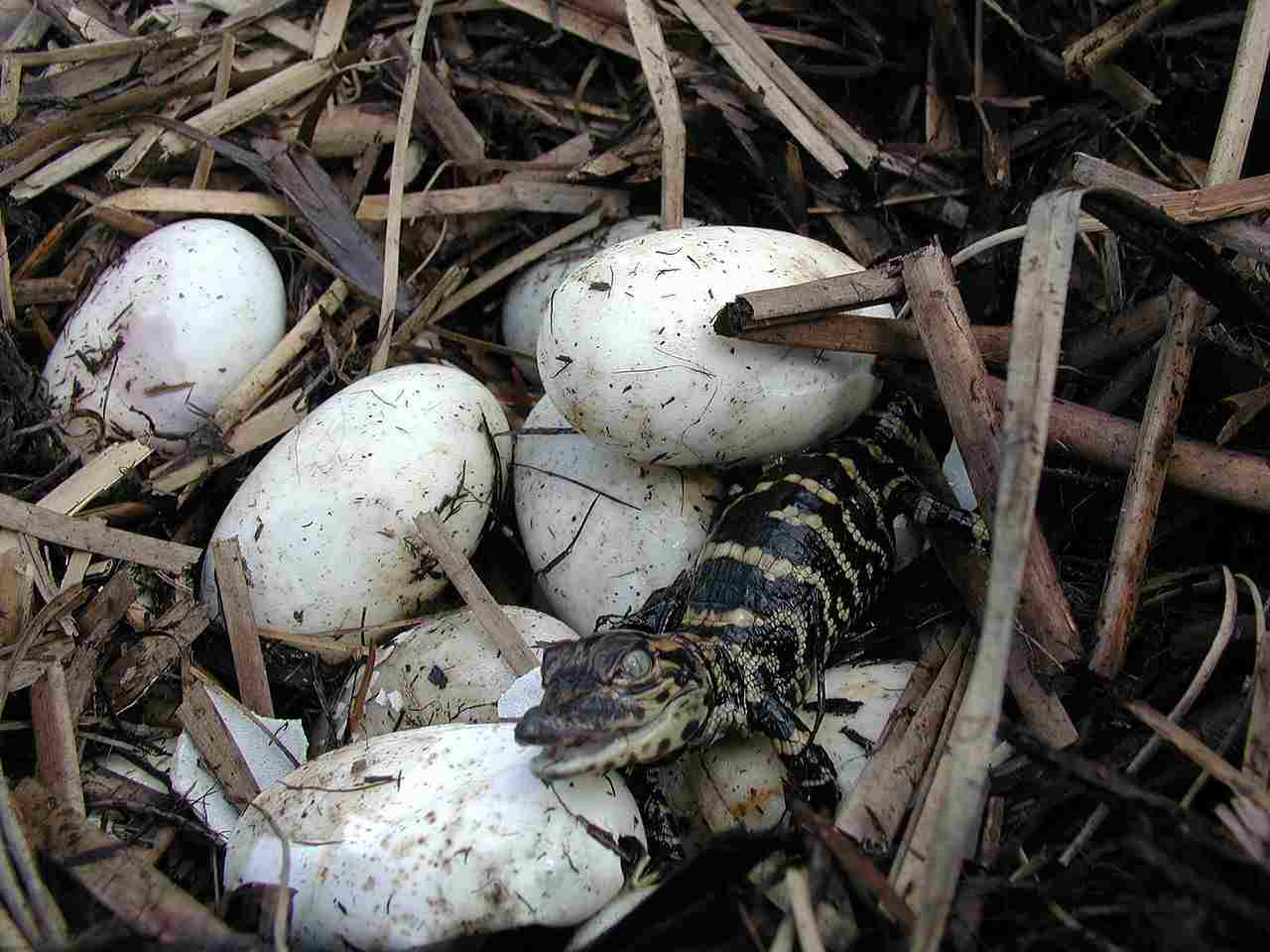
Alligator: Oviparous, with females laying eggs in nests. Females exhibit maternal care, guarding the nest and assisting hatchlings to water.
Alligator Snapping Turtle: Oviparous, with females laying eggs in concealed nests. No parental care; hatchlings are independent.
Comparison: Both species are oviparous, but alligators exhibit maternal care, while alligator snapping turtles do not.
Ecological Implications: Parental behaviors influence the survival rates of offspring and contribute to the overall population dynamics in their respective habitats.
18. Parental Behavior:
Alligator: Exhibits maternal care, with females guarding nests and assisting hatchlings. Offers protection and guidance during the vulnerable early stages of life.
Alligator Snapping Turtle: Lacks parental care; hatchlings are independent from the moment they emerge from the nest.
Comparison: Alligators display significant parental care, whereas alligator snapping turtles have minimal involvement in offspring care.
Ecological Implications: Parental care contributes to the survival and development of offspring, impacting population dynamics and species interactions within ecosystems.
19. Proximity to Human-Inhabited Areas:
Alligator: Can inhabit areas close to human settlements, leading to occasional encounters. Generally, they coexist with humans but may pose risks if not managed properly.
Alligator Snapping Turtle: Tends to avoid highly populated areas and human disturbance. Encounters with humans are less frequent.
Comparison: Alligators are more adaptable to human-inhabited areas than alligator snapping turtles.
Ecological Implications: Human proximity influences their behavior and interactions, impacting both wildlife and human safety.
20. Behavior Toward Humans:

Alligator: Generally avoids confrontations with humans but can become aggressive if provoked or feels threatened. Responsible for occasional attacks.
Alligator Snapping Turtle: Typically avoids human interaction, but if threatened, may display aggression and deliver a powerful bite.
Comparison: Both species tend to avoid humans, but alligators are more prone to interacting with humans, sometimes resulting in conflicts.
Ecological Implications: Interactions with humans can have consequences for both the species and human populations, necessitating responsible coexistence strategies.
21. Danger Posed to Humans:
Alligator: Can pose a danger if provoked or if humans encroach on their territory. Responsible for occasional attacks, usually when humans approach too closely.
Alligator Snapping Turtle: Generally not considered dangerous to humans, but caution is advised due to their powerful bite if threatened.
Comparison: Alligators pose a higher risk to humans compared to alligator snapping turtles.
Ecological Implications: Human safety considerations are essential in regions where these species coexist, influencing conservation and management strategies.
22. Associated Precautions:
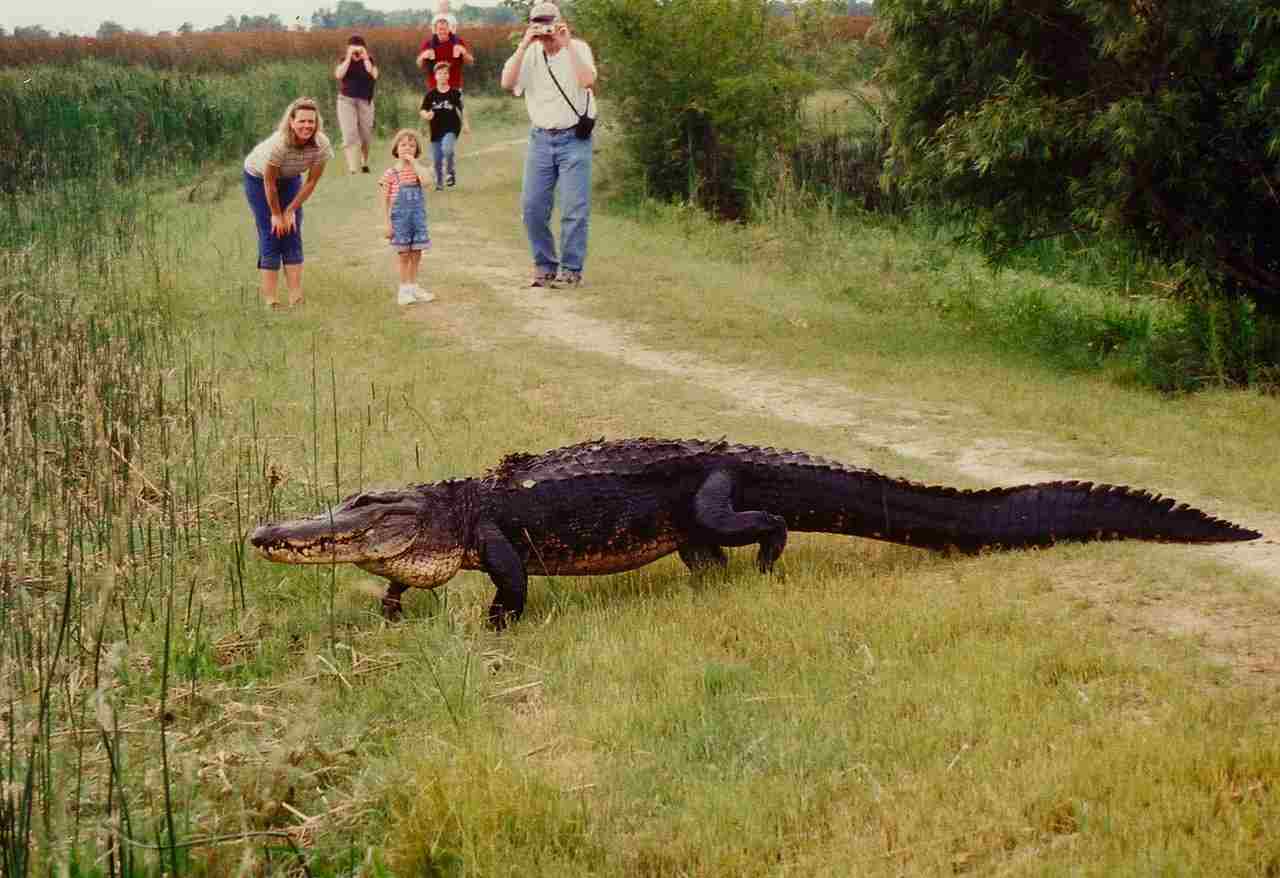
Alligator: Humans should exercise caution near water bodies where alligators are present. Avoid feeding them and maintain a safe distance to prevent potential conflicts.
Alligator Snapping Turtle: Caution is advised when encountering these turtles, as their powerful bite can cause injury. Respect their space and avoid handling them.
Comparison: Precautions for alligators focus on water safety, while precautions for alligator snapping turtles revolve around avoiding bites.
Ecological Implications: Human awareness and responsible behavior contribute to minimizing negative interactions, preserving both species and ensuring ecosystem health.
23. Conservation Status:
Alligator: Varied conservation statuses depending on the species. The American alligator, for example, has recovered from endangered status and is now classified as least concern.
Alligator Snapping Turtle: Faces conservation concerns, with some populations declining due to habitat loss, pollution, and overharvesting.
Comparison: Alligators generally have more stable conservation statuses compared to alligator snapping turtles, which are more vulnerable.
Ecological Implications: Conservation statuses reflect the health of populations and the impact of human activities on these species and their habitats.
Summary of Comparison
Appearance:
Alligator: Streamlined, dark coloration, prominent ridges.
Alligator Snapping Turtle: Rugged, dark shell, massive head, lure for prey.
Size:
Alligator: 8-15 feet.
Alligator Snapping Turtle: Over 2.5 feet.
Weight:
Alligator: 500-1,000 pounds.
Alligator Snapping Turtle: 155-175 pounds.
Bite Force (PSI):
Alligator: 2,125 PSI.
Alligator Snapping Turtle: ~1,000 PSI.
Physical Offensive Advantages:
Alligator: Quick strikes, powerful bites, streamlined body.
Alligator Snapping Turtle: Lure for prey, ambush tactics.
Physical Defensive Advantages:
Alligator: Tough hide, water submersion.
Alligator Snapping Turtle: Hard shell, aggressive behavior.
Speed:
Alligator: Up to 20 mph.
Alligator Snapping Turtle: Slow-moving.
Agility:
Alligator: Agile in water.
Alligator Snapping Turtle: Less agile.
Overall Physical Capacity:
Alligator: Versatile for aquatic and terrestrial activities.
Alligator Snapping Turtle: Specialized for ambush predation.
Habitat Preference(s):
Both prefer freshwater habitats; alligators also in brackish water.
Tracks:
Both leave tracks with claw marks and a tail drag.
Lifespan:
Alligator: 30-50 years.
Alligator Snapping Turtle: 20-70 years.
Mode of Feeding:
Both are carnivorous ambush predators.
Intelligence:
Alligators generally show higher cognitive abilities.
Social Behavior:
Alligators exhibit more complex social behaviors.
Mode of Reproduction:
Both are oviparous; alligators display maternal care.
Parental Behavior:
Alligators exhibit significant maternal care; alligator snapping turtles lack parental care.
Proximity to Human-Inhabited Areas:
Alligators can inhabit areas close to humans; alligator snapping turtles avoid highly populated areas.
Behavior Toward Humans:
Both generally avoid humans; alligators more prone to interactions.
Danger Posed to Humans:
Alligators pose a higher risk than alligator snapping turtles.
Associated Precautions:
Precautions for alligators focus on water safety; for alligator snapping turtles, avoiding bites.
Conservation Status:
Alligators generally have more stable conservation statuses compared to more vulnerable alligator snapping turtles.
Conclusion:
I). Similarities:
Both are carnivorous reptiles with an ambush predation strategy.
Oviparous reproductive strategy with eggs laid in nests.
Share characteristics such as tracks with claw marks and a tail drag.
II). Differences:
Alligators are larger, faster, and more adaptable to human-inhabited areas than alligator snapping turtles.
Alligator snapping turtles have a specialized lure for hunting, while alligators rely on powerful jaws and quick strikes.
Alligators exhibit maternal care, whereas alligator snapping turtles lack parental involvement.
